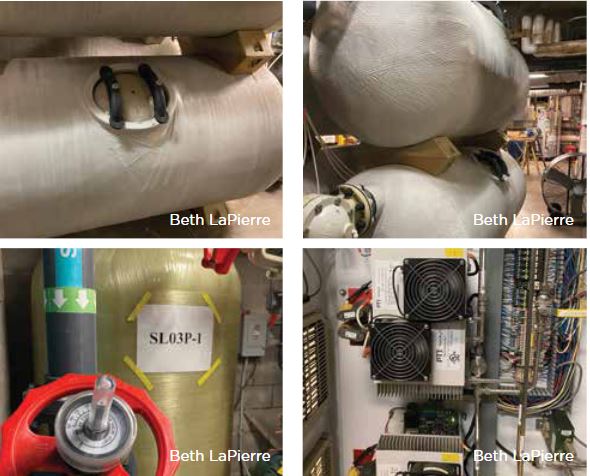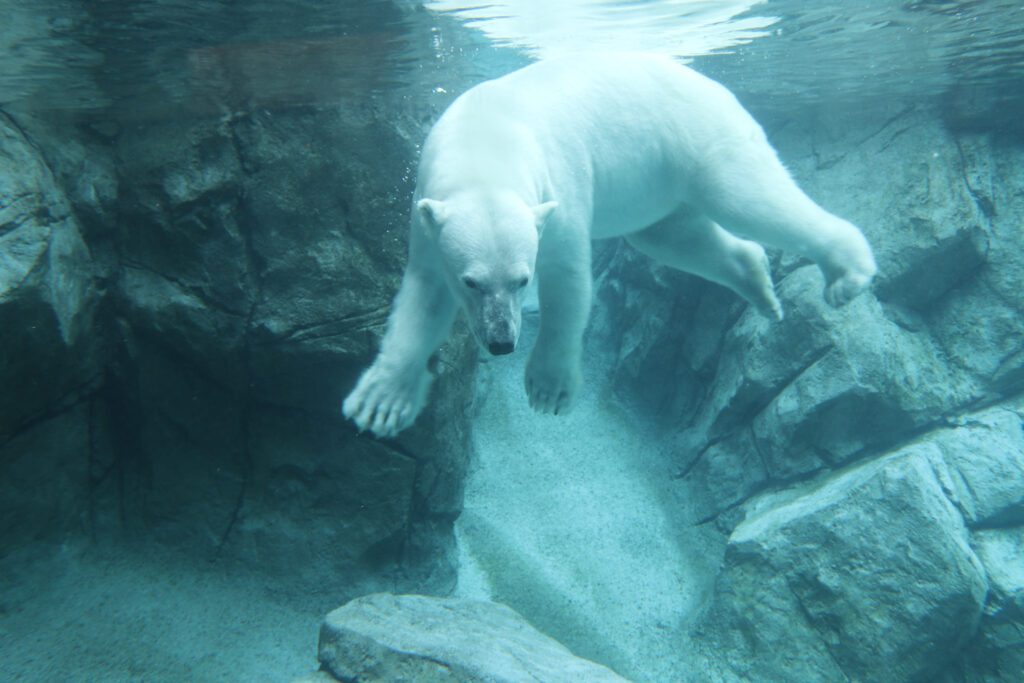Aquatic Life Support Systems support polar bear, sea lion, river otter, and penguin pools, as well as eagle pond, sturgeon, hellbender, cichlid and reef tanks. These habitats require management of more than 250,000 gallons of water daily. Supporting aquatic life is something of a hybrid position, combining both animal care and facilities expertise. It requires chemistry, engineering, plumbing, mechanical and zoology knowledge. Our Zoo staff are also extremely adept problem-solvers, regularly troubleshooting and addressing any issues as they arise.
All AZA-accredited zoos and aquariums are required to regularly monitor water quality. High quality of water enhances animal health programs, and tests for pH, chemicals, alkalinity, turbidity (clarity of water), and bacteria are done regularly. Seneca Park Zoo uses zero chemicals to treat water, meaning no halogen, bromine, or chlorine. Instead, we rely on sand filtration, mechanical filtration, and oxidation sterilization protocols. Aquatic animal habitats each require specific water quality measures. Sea lion and polar bear pools filter 1,000 gallons per minute and 700 gallons per minute respectively. The sea lion pool requires higher filtration because there are four animals that live in that habitat, whereas Anoki the polar bear takes a dip several times a day.
The Process
Filtration and sterilization begin with mechanical
filters. These giant inline strainers filter out large
particles, waste, and other debris like leaves and
sticks, that fall into the pools. After the water is
strained, it travels through five large pumps, which
pull the water through the system. All water flowing
through the pumps is measured for flow and volume
using special gauges.
Water is then pumped through horizontal sand
filters. Coarse-grained sand and gravel efficiently
remove suspended solids through straining and
absorption. Layers of graded gravel line the bottom
of the tank over networks of drainage pipes, and
over that, the sand.
After the water exits sand filtration, it is then sterilized with ozone. Seneca Park Zoo does not use chemicals for sterilization, partly because of the threats that traditional chemical treatments pose to ecosystems. Ozone is a superior disinfectant and one of the strongest oxidants, it is often used in drinking water supplies and air purification settings. The Zoo generates and contacts ozone on site, requiring specific knowledge and systems support for these complex processes.
Once water is contacted with ozone, it is then passed through a cyclonic separator that spins the water, followed by a heat source, removing the ozone completely




Polar bear water heads directly to the habitat. However, before making its way back into the sea lion habitat pool, water may be chilled. Sea lions require water temperature below 68 degrees or else it may be harmful to them. While not necessary in cooler months, water must be cooled during summers, and it is passed through a 55-ton chiller. This whole process takes seconds and is supported by hours and hours of hard work by our Aquatic
Life Support team. The next time you’re in Rocky Coast Gallery, know that just under your feet, systems and dedicated staff are working around the clock to ensure the best possible environments for the animals in our care.








